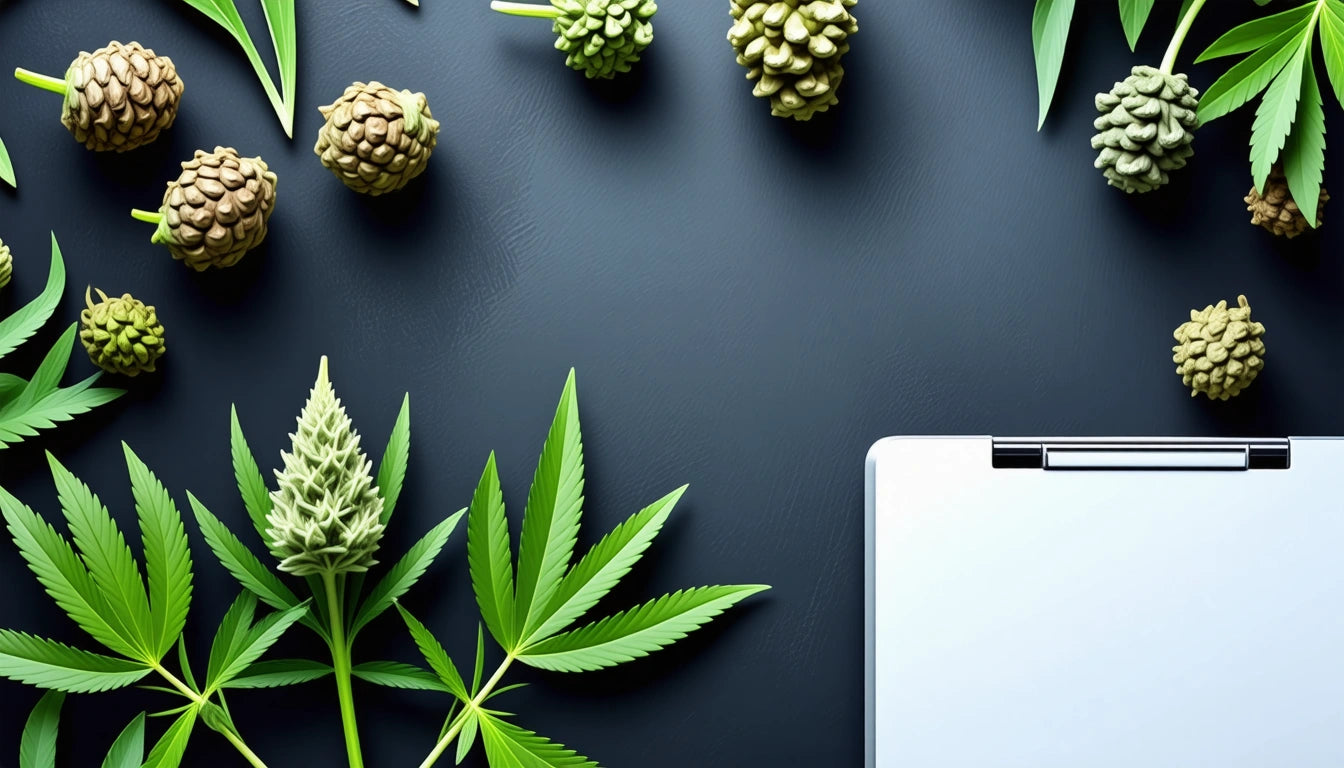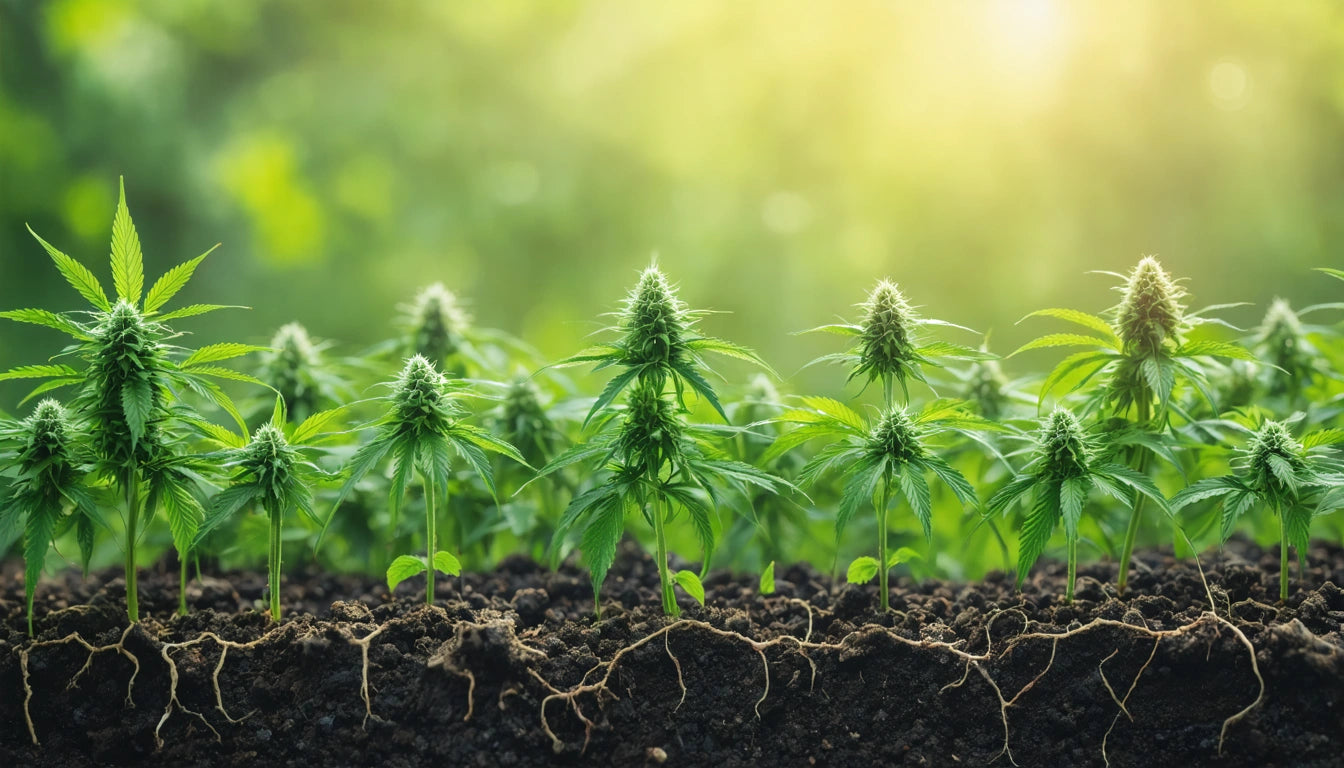Table of Contents
Top Cannabis Strains for Inflammation and Pain Relief
Finding effective relief from chronic inflammation and pain remains a primary reason many patients turn to medical cannabis. With growing research supporting cannabis as an alternative to traditional pain medications, understanding which strains work best for specific symptoms becomes increasingly important. This guide explores the most effective cannabis varieties for managing inflammation and pain based on patient reports and available research.
Understanding Cannabis for Pain Relief
Cannabis contains over 100 cannabinoids and numerous terpenes that work together to produce therapeutic effects. For inflammation and pain management, compounds like THC, CBD, CBG, and specific terpenes like myrcene and beta-caryophyllene play crucial roles. According to research on cannabinoids for pain relief, these compounds interact with the body's endocannabinoid system to reduce inflammation and alter pain perception.
When selecting strains for therapeutic use, proper storage becomes essential for preserving potency and terpene profiles. Many patients rely on airtight containers with secure lids to maintain freshness and medicinal properties of their cannabis, especially for long-term symptom management programs.
Best Indica Strains for Inflammation
Indica strains typically provide deeper body relaxation and pain relief, making them ideal candidates for inflammatory conditions. These varieties often contain higher levels of myrcene, which contributes to their sedative and anti-inflammatory properties.
Granddaddy Purple
This classic indica is renowned for its powerful body-numbing effects and anti-inflammatory properties. With high myrcene content and moderate THC levels (typically 17-23%), Granddaddy Purple offers substantial relief for inflammatory conditions while promoting deep relaxation.
Northern Lights
A legendary indica strain, Northern Lights delivers potent pain relief with minimal cerebral effects. Its combination of myrcene, caryophyllene, and pinene creates an entourage effect particularly effective for reducing inflammation. THC content usually ranges from 16-21%, making it strong but manageable for regular users.
9 Pound Hammer
With THC levels often exceeding 20%, this heavy indica provides powerful relief for severe inflammation and pain. Its sedative properties make it best suited for evening use when immediate, strong relief is needed without concern for daytime functionality.
Hybrid Strains with Anti-Inflammatory Properties
Balanced hybrids offer inflammation relief with more functional effects than pure indicas, making them suitable for daytime use. These strains combine pain relief with maintained mental clarity.
ACDC
This high-CBD strain (often 1:20 THC:CBD ratio) provides significant anti-inflammatory benefits without intoxication. Research suggests CBD's anti-inflammatory mechanism works differently than THC, making ACDC particularly effective for inflammatory conditions requiring daytime treatment.
Harlequin
With a balanced 2:1 CBD:THC ratio, Harlequin delivers mild psychoactive effects alongside substantial pain relief. Its unique terpene profile includes both myrcene and pinene, creating a synergistic effect for inflammation reduction without heavy sedation.
You can explore more about these balanced options in this comprehensive strain guide which details their effects and medicinal applications.
Sativa-Dominant Options for Daytime Pain Management
While indicas dominate pain management discussions, certain sativa-leaning strains offer inflammation relief without sedation, making them appropriate for daytime use.
- Jack Herer: Contains pinene and beta-caryophyllene, providing anti-inflammatory effects alongside mental clarity and energy.
- Durban Poison: High in terpinolene and THCV, offering pain management with enhanced focus rather than sedation.
- Sour Diesel: Delivers quick-acting pain relief with uplifting effects, making it popular for daytime inflammation management.
For patients managing conditions like migraines that require specific strain profiles, specialized strain selections may provide targeted relief for neurogenic inflammation.
Cannabinoids and Terpenes for Inflammation
The anti-inflammatory effects of cannabis extend beyond THC and CBD. Minor cannabinoids and specific terpenes play crucial roles in inflammation reduction:
Key Anti-Inflammatory Compounds
- Beta-Caryophyllene: Acts as a CB2 receptor agonist, reducing inflammation without psychoactive effects.
- Myrcene: Enhances the blood-brain barrier permeability, potentially increasing the effectiveness of other cannabinoids.
- CBG (Cannabigerol): Shows promise for inflammatory bowel conditions through interaction with CB2 receptors.
- CBC (Cannabichromene): Demonstrates anti-inflammatory properties without binding directly to CB1 receptors.
According to research on indica varieties, strains high in these compounds often provide the most significant anti-inflammatory benefits, particularly for conditions like arthritis, Crohn's disease, and neuropathic pain.
Patient Recommendations and Practical Considerations
When utilizing cannabis for inflammation and pain management, consider these practical approaches:
- Start with low doses and gradually increase until finding effective relief.
- Consider combining different strains for comprehensive symptom management.
- Track effects in a symptom journal to identify which strains work best for specific conditions.
- Consult with healthcare providers, particularly when combining cannabis with other medications.
- For anxiety-related inflammation, explore strains specifically formulated for anxiety management.
The best strains for inflammation and pain relief ultimately depend on individual body chemistry, condition specifics, and lifestyle needs. What works effectively for one patient may produce different results for another, highlighting the importance of personalized approaches to cannabis medicine.











Leave a comment
All comments are moderated before being published.
This site is protected by hCaptcha and the hCaptcha Privacy Policy and Terms of Service apply.